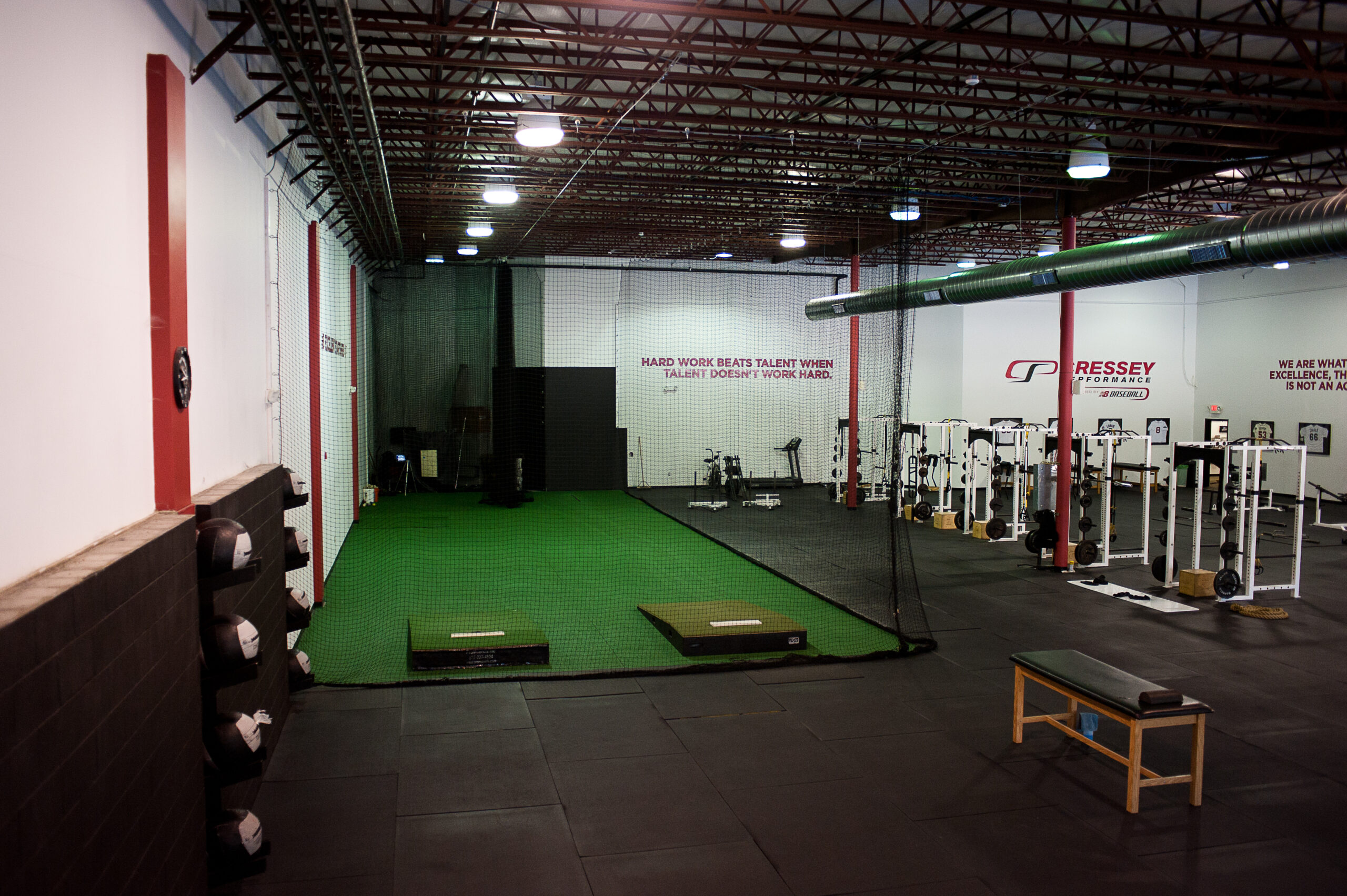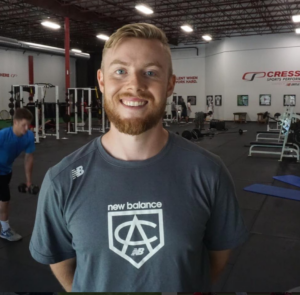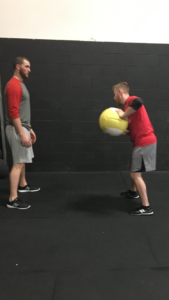
7 Ways to Maintain Strength During Baseball Season
Today’s guest post comes from Cressey Sports Performance – Massachusetts Director of Performance, John O’Neil.
With the off-season winding down, many players are wondering how to maintain the strength they put on during the off-season. Here are seven simple but effective ways to maintain strength during the baseball season.
1. Maintain Body Weight.
Here at CSP, we spend all off-season putting 10, 15, and sometimes 20 pounds on athletes to help increase their ability to produce force. Sports are won by those who exhibit greater Rates of Force Development (RFD), and, the limiting factor for many youth athletes is the ability to produce gross amounts of force. A larger person has a better chance of producing force. If your mass is decreasing throughout a season, maintaining the same levels of force production will be difficult.
Make sure to consistently weigh yourself during the season. If you tend to be a guy who struggles to keep weight on, make sure to bring food with you to the field and stay properly hydrated. Sneaking in extra calories pre- and post-practice, in addition to occasionally having something to eat mid-game, could go a long way in maintaining body weight. Be sure to read EC’s article, 8 Tips for Not Wasting Away During Summer Baseball, too, if you haven’t already.
2. Consolidate Stressors.
This is a fancy way of saying to make your harder days focused on building yourself up and letting your easy days be focused on recovery. If you’re at the field six days a week, a seventh day of rest might be exactly what you need, instead of hitting the gym on day seven. Try and sneak in weight room sessions on the same days that you have extensive on-field work. All stress is stress. For example, a position player who is on his feet for 2+ hours a day six days in a row probably needs the seventh day to rest and would get a much greater benefit from stacking lifting weights on top of a few of the harder days during the week. Know that if you’re not taking care of your recovery modalities (through sleep, nutrition, lifestyle), your body’s ability to absorb and adapt to stress will be diminished.
3. Appreciate Micro-Sessions.
While a majority of off-season lifts will take 60-90 minutes, this doesn’t mean that in-season lifts need to as well. There’s nothing inherently wrong with hitting 3-4 20-40 minute sessions throughout the week. This ensures that the quality of work will be higher; in fact, the quantity of work for four 30-minute sessions might also be greater than just trying to blow it out on the gym the one day you have a dedicated 90 minutes. A typical 30-minute session could be as follows:
A1) Deadlift or Squat, 3×3
A2) Arm Care, 3 sets
A3) Core, 3 sets
B1) Single-Leg Exercise, 3 sets
B2) Upper-Body Push, 3 sets
B3) Upper-Body Pull, 3 sets
By switching to a tri-set format and making the session full-body, you can sneak in extra work and still finish the above session in under 40 minutes. In fact, even getting in two sets of all of the above multiple times a week will probably have greater carryover than going several days between sessions just so you can wait to get in the typical 18-24 set range that we hit during a mid-offseason session.
4. Understand the Difference Between Soreness and Progress.
Not all strength training sessions need to be tough or need to make you sore to create progress. In fact, if you’re constantly sore during the season, you’ll be limited in your ability to output the highest levels of power that you can achieve. Simple ways to avoid soreness from in-season lifts include not including brand-new exercises – the novelty of a new exercise will create more soreness than one you’ve recently done – and avoiding high amounts of eccentric stress. For example, a Bulgarian split-squat is a great exercise, but a step-up might be a better in-season choice because it provides far less eccentric stress.
Not all lifts need to be heavy grinders, either; in fact, maximal strength is the training quality that will have the longest carryover in terms of the amount of times you need to hit it just to maintain it. Issurin’s Residual Training Qualities chart claims that Max Strength will stick around for periods up to 30 +/- 5 days, which means you could theoretically hit Max Strength qualities 1-2x/month and maintain them. A simple action item to scale this would be to take your main lift and hit it within different zones on the force-velocity curve in different weeks: In week 1, go heavy (near absolute strength), in week 2, work on strength-speed, in week 3, work on speed-strength, and just rotate it. The weight room shouldn’t beat up your ability to play the sport during the season.
5. Don’t Waste Valuable Energy on Needless Extra Reps.
To add on the point I outlined in #2, your body doesn’t know the difference between fatigue created on the field and fatigue created in the weight room. If you’re a position player, know that the extra 100 swings you decided to take after practice are going to hinder your body’s ability to adapt to stress you want to add to it in the weight room. When it comes to extra on-field work, pick and choose your battles. We know that fatigue is the enemy of motor learning, so if you are sacrificing quality of on-field technique work because you feel like you need extra reps, you might be just getting worse at your sport. Keep the quality of all swings, throws, and fielding reps high and near the speed of sport if you want them to have carryover. If only the amount of reps that you NEED to take are applied, then you’ll have much more time and energy to get some strength work in.
6. Choose the Right Conditioning Modalities.
We know that baseball is an alactic-aerobic sport. The average work:rest ratio amongst pitchers is close to 1:20 (delivery takes less than 2 seconds, average MLB time in-between pitches last season was 23.8 seconds). The average work:rest ratio for position players is generally far greater given the lack of action they’ll take part in compared to the pitcher. If you’re training for baseball by applying long-distance running, you’re essentially training to be less efficient at the time demands the sport requires. This topic is covered widely in previous articles (here and here) on this site, but it is still amazingly prevalent within the baseball community. To layer on top of the points I made above, you’ve sapped the adaptive capacity of the individual for something that has nothing to do with getting better at the sport. In short, keep your speed work fast and keep your rest time focused on recovery.
7. Maintain Needed Mobility.
While this one may not directly relate to strength as much as a few of the others, it’s important to understand that if you are losing mobility you need to perform your sport at a high level, you now have to choose between spending time gaining that mobility back or maintaining strength. Force, power, RFD, speed, and all the other physiological qualities for which we train are only as good as your ability to use them on field. Simple strategies such as having a daily mobility routine as part of pre- and post-practice can save valuable time that you can use towards increasing the physiological qualities that I mentioned above in the weight room. Five minutes before and after every on-field session can save valuable time later in the season when overuse-related mobility concerns start to arise, not to mention, they’ll keep you healthy and on the field throughout the season.
Wrap-up
John and the CSP team are excited to once again orchestrate the Elite Collegiate Baseball Development Summer Program this June-August. The comprehensive approach to developing pitchers has drawn players from around the country with outstanding results. For more information, click here.
About the Author
John O’Neil (@ONeilStrength) is Director of Performance at Cressey Sports Performance-MA. You can contact him by email at joh.oneil@gmail.com and follow him on Instagram.





